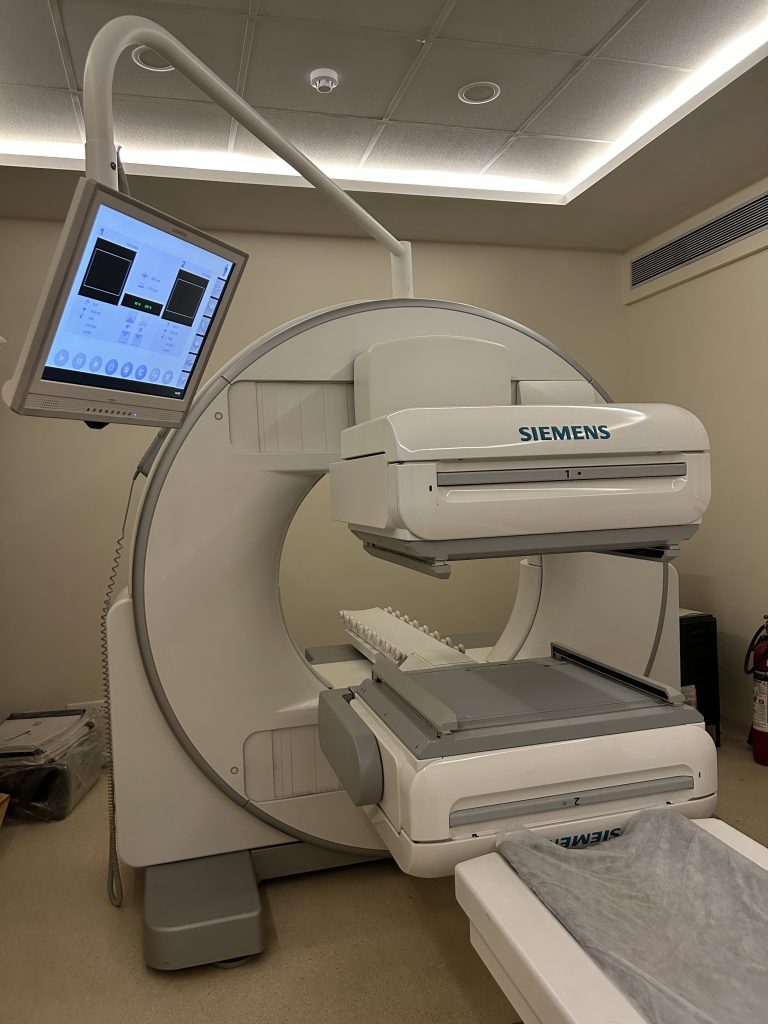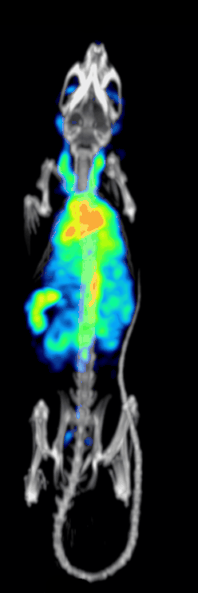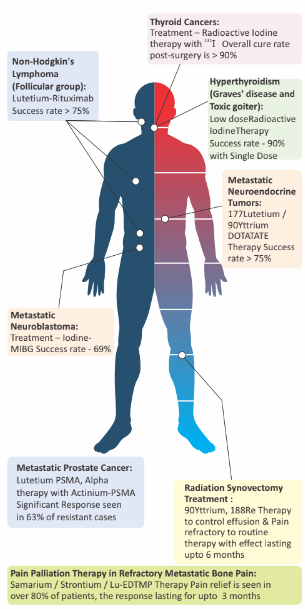- Next to T. B. Hospital Main Gate, Koch’s House, Jerbai Wadia Road, Sewri

SPECT (Gamma scan)
NM (Nuclear Medicine) SPECT (Single Rhoton
Emission Computed Tomography) and PETCT
(Positron emission Tomography), also known as
functional imaging – molecular imaging techniques are modern medical specialties in which small amount of radioactive isotopes are attached to molecules or chemicals to form “Radiopharmaceuticals” which specifically localize within different organs and organ systems and emit photons, which are detected by sophisticated equipment known as Gamma Camera and PET scanner.
Frequently performed SPECT procedures:
MYOCARDIAL PERFUSION SCAN- MPS /STRESS THALLIUM
Targeted CANCER Treatment with NUCLEAR Medicine Therapy
Radionuclide therapies
- Radionuclide therapies involve the administration of radioactive isotopes to the patient that binds to the target cells and emits radiation selectively to those specific tumor cells.
- Therapies like Radioiodine for thyroid cancer and the more recent PRRT with Lutetium DOTATATE are FDA-approved and have been in routine clinical practice.
- Commonly performed radionuclide therapies are:
- Radioiodine therapies for thyroid cancer
- PRRTfor metastatic neuroendocrine tumors
- Radioligand therapy for metastatic prostate cancer
RADIOIODINE THERAPY FOR THYROID CANCER
This is one of the most well-established radionuclide therapies, being in practice for decades.
Radioiodine therapy is the adjuvant treatment of choice in differentiated thyroid cancers
Indications:
Remnant ablation in a post-thyroidectomy setting Treatment of metastatic thyroid cancer Treatment of recurrent disease in thyroid bed on
follow-up
How is radioiodine therapy administered?
Radioiodine is a colorless, tasteless water-like the liquid that is administered orally, followed by admission in a special radiation isolation room for 1-3 days
What are the side effects ?
There are no major side effects of the procedure. There maybe transient soreness in the region of salivary glands over the jaw region.
Rarely, patients may develop alteration in taste and/or dryness of mouth that usually recovers in.
PEPTIDE RECEPTOR RADIONUCLIDE THERAPY
Who would benefit from PRRT ?
- Adults with metastatic/inoperable neuroendocrine tumor who have tested positive for Somatostatin receptor expression (usually using Ga-DOTA PET-CT
How is PRRT administered ?
- PRRT uses Lutetium isotope that is given as an intravenous infusion for 30 min. followed by admission in a special isolation room, usually for 24 hours.
- One set of PRRT includes 4 therapy cycles, at 8 weeks interval. If required, another setof 3 cycles can be given at a later time point in cases of disease progression based on clinical findings.
How effective is PRRT in metastatic NET ?
- The single most important benefit Of PRRT is achieving clinical results while maintaining (in fact improving) quality of life.
- As per published literature, PRRT causes a 79% reduction in risk of disease progression or death compared to 60 mg long-acting octreotide therapy.
- PRRT reduces the tumour growth and achieves a stable growth-free period ranging from 1-4 years even after finishing the therapy
- PRRT is already an FDA approved therapy in the USA and has been extensively used in Europe as well.
- PRRT is already an FDA approved therapy in the USA and has been extensively used in Europe as well.
What are the side effects ?
- Some occasional mild nausea, minimal reversible transient hair fall (notbarely noticeable).
- Less than 1% population may show marginal reduction in renal function over years. The risk is higher if the kidney function is already low.
- There maybe some transient self-limiting bone marrow suppression.
- Secretory tumors may show a transient worsening of these symptoms, typically lasting for 24 hours.
How are the results of this therapy ?
- Typically the therapy is administered in disease that is progressive or has failed to respond the conventional modes of management. In such cases, the results are quite encouraging:
RADIOLIGAND THERAPY FOR METASTATIC PROSTATE CANCER
Currently under use in cases of castrate resistant metastatic prostate cancers, radioligand therapy for metastatic prostate cancer has shown very promising results.
While internationally Radium (Xofigo) is available, in India there are 2 types of radionuclide therapies for metastatic prostate cancer:
- Beta emitter Lutetium-PSMA (1/6th the cost Of Xofigo with almost similar efficacy)
- Alpha emitter Actinium (1/2 the cost of Xofigo with exactly the same clinical results)
The treatment is administered as an intravenous infusion followed by admission in the radiation isolation ward, usuallyfor 24 hours.
There are no major side effects to the treatment. There maybe some transient self-limiting bone marrow suppression. Occasional patients may complain of dryness in the eyes.
The results are promising, with an objective response in over 60% cases resistant to conventional hormone and chemotherapy; the overall progression-free survival even in this population being 11-16 months.


